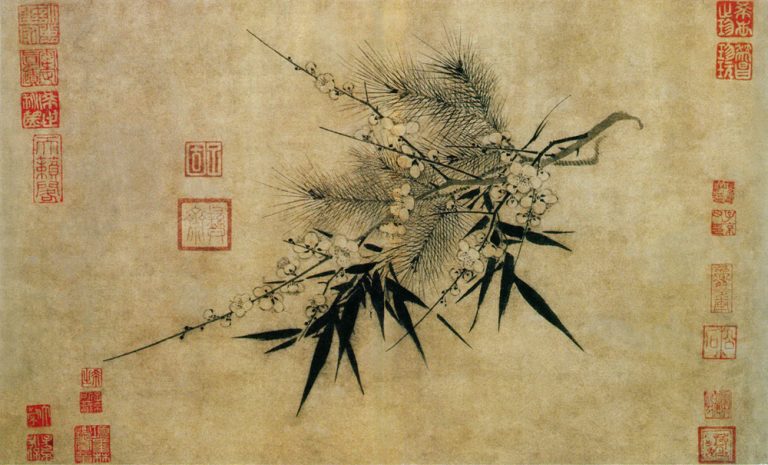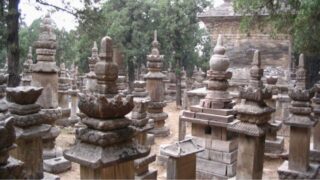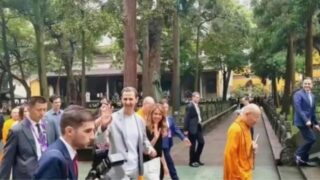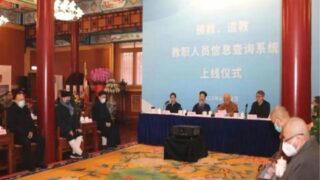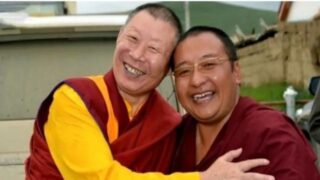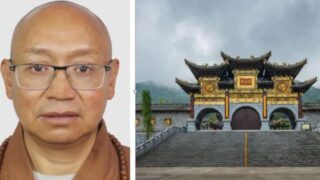Even during the coronavirus outbreak, the Chinese authorities continued closing down Buddhist temples and destroying statues of deities.
by Yang Luguang
On April 1, the government of Ma’anshan city’s Dangtu county in the eastern province of Anhui forcibly demolished the Longhua Temple, originally built in the 13th year of reign by Emperor Ming of Tang (713-756) and rebuilt after it was destroyed during the Cultural Revolution. In May last year, the temple was sealed off by the government for “lack of religious activity venue registration certificate.”


According to an eyewitness, nearly 100 law enforcement personnel surrounded the temple, prohibiting anyone from approaching, especially those who wanted to protect it. Some elderly people were even pushed to the ground. A resident who tried to film the demolition was threatened to be arrested. In a short while, the temple became a pile of ruins, and officials arranged personnel to dig a pit to bury them to hide all traces of the demolition.


On January 3, local authorities destroyed the Phoenix Temple in Qitang town, administered by the Bishan district of Chongqing, a megacity in southwest China. “The Communist Party is a band of modern-day bandits that fight Bodhisattva and deprive ordinary people of places to find peace,” a local Buddhist said with anger.


In March, eight Buddhist temples in the Yongchuan district of Chongqing were closed on directives from the local government. Officials threatened to demolish them if orders were not executed. To preserve the temples, some managers had no choice but to brick up their entrances. “Several temple managers were told to do so as an epidemic prevention measure,” one of the managers said. “Xi Jinping doesn’t allow people to practice Buddhism.”


On March 9, an 11-meter-tall Guanyin statue atop a newly built structure in the Yuantong Temple, located in Fuzhou city in the southeastern province of Fujian, was demolished for “being too tall.” Officials pressured the temple’s abbot to remove the statue, built six years ago at the cost of over 300,000 RMB (about $ 43,000), threatening to demolish the place of worship otherwise. With no other choice, he hired workers and payed them over 100,000 RMB (about $ 14,000) for the demolition.
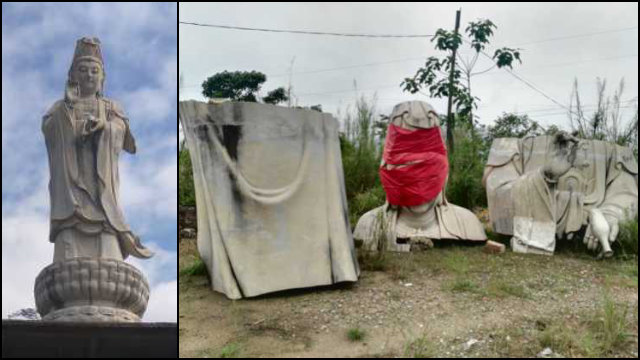

“The Communist Party fears that growing numbers of Buddhists will make it hard for them to rule,” a local Buddhist commented. “Thus, they want to reduce the number of believers and ‘sinicize’ religions. It will be more and more difficult for temples to survive in the future.”
In late January, officials from a town in the Kaizhou district of Chongqing pressured a CCP secretary in one of villages to destroy a local temple “in the name of epidemic prevention,” or he will be dismissed from office. On February 18, he hired an excavator to remove a 3-meter-tall Buddha statue placed in a pavilion of the Foye Temple’s courtyard but failed to do so. He then told the police to take away the temple’s manager protesting the demolition and hired a crane the next day to remove the statue and demolish the pavilion.


On December 20, the government of Qiqihar city’s Longsha district in the northeastern province of Heilongjiang destroyed a Buddha statue in the Qingyun Temple because “the statue was too tall.” It was built around 2013, at the cost of nearly one million RMB (about $ 140,000).


